My Hands are Full of Circles

Art has always had a special place in Persia. One of the most important arts in Iran is calligraphy, which features many different styles. The Persian alphabet has 32 letters written from right to left. One of the most beautiful Persian calligraphic styles is Nastaliq which is a symbol of Persian art around the world. Nastaliq style was founded by “Mir Ali Tabrizi” in 8th century. Ancient treatises record that “Mir Ali” had a dream about wild geese and their fluid movements. It was the soft movements of those birds during flight that inspired Nastaliq. After Mir Ali Tabrizi, there were many calligraphers such as his son; Mirza Abdullah, Sultan Ali Mashhadi and Mir Ali Heravi who contributed to the refinement of Nastaliq style. Another master in Persian calligraphy, Mir Emad developed the style further. Developments made by Mir Emad are still inspiring modern Persian calligraphers 400 years later. Mir Emad trained many disciples and spread the Nastaliq style among Islamic countries in central Asia. In the 13th and 14th century prominent masters in Persian Calligraphy, such as Asadullah Shirazi, Mirza Gholamreza Esfahani, Mir Hossein, and Mohammadreza Kalhor continued to refine the Nastaliq style. Nastaliq style has many principles and rules. The most important of them are the combination, location, coordination, weakness, strength, surface, rotation, virtual ascent and decent. Calligraphy is different from simple writing of letters and typography. Calligraphy is a spiritual are, which is found in almost all cultures. In the East, and particularly in Islamic countries and Iran, it has great importance among the visual arts. It has always been at the forefront of artistic developments and has evolved over time. Nastaliq style is the most complete and most popular Persian Calligraphic style. Regularity, moderation, and sobriety are its most important features and because of this it has been called the Bride of Islamic Writing. Nowadays, more than 700 masters and teachers of Persian Calligraphy in Iran are active and are training students in this field. The Iranian Calligraphers Association (ICA), founded in 1950, is the oldest and the most prominent art association in Iran. The ICA is unique in the Middle East in terms of antiquity and impact.
Shahab Andarva
Iranian Calligraphers Association

I began to learn calligraphy when I was 13. I went to the ICA to learn calligraphy under the supervision of Mr. Mohammad Amin Khosravi. I have received 6 certificates including the upper advanced degree.
My works have a feeling for the past when white, cream, khaki, and brown were commonly used. In antiquity, the calligraphers of the East were doing calligraphy on small pieces of scarce paper for hours while leaning against thatch walls.
Tow such calligraphers who have inspired me are Miremad Hasany and Miralli Heravi. Miralli’s practice of unique way of creating diverse combinations and Miremad’s precise and harmonious connections between letters and words.
My artworks are images of calligraphic words that took hundreds of years to reach their present shapes. Sometimes the form in my mind is so important that I do not pay attention to writing a sentence with a specific meaning; I use words with scattered meanings only to achieve my desired form. The ideal form is itself the language of a visual work along with the concepts within the words.
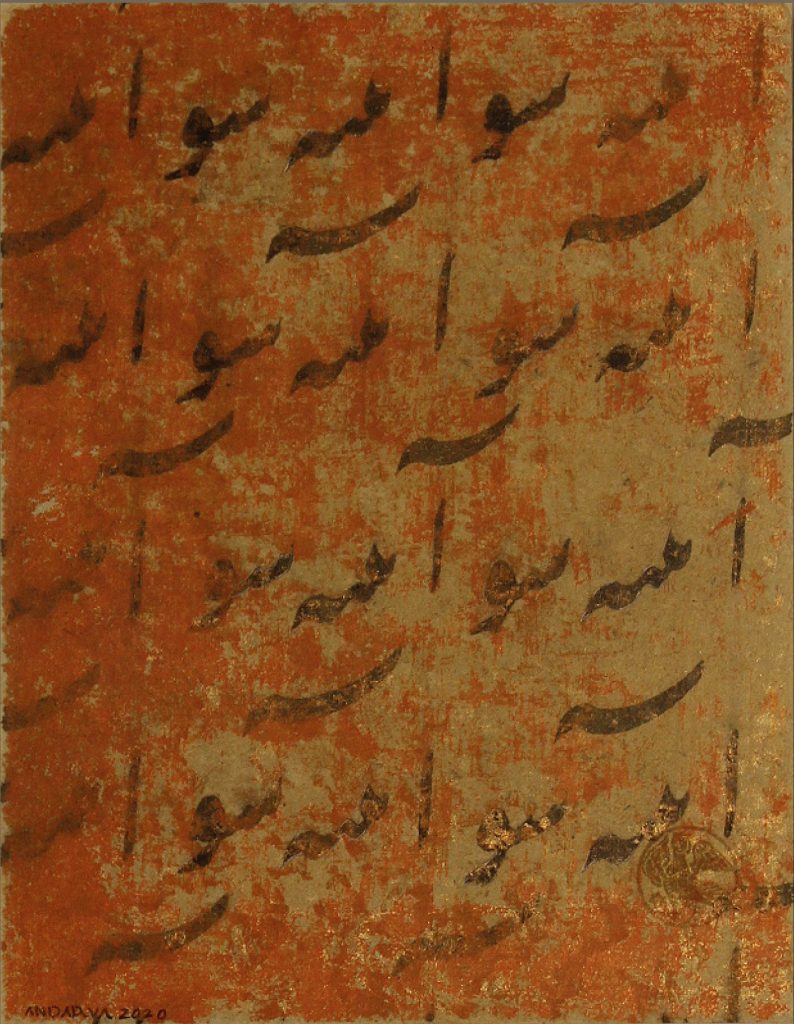
Ink and Acrylic on paper
Nastaliq style
The text is a single sentence which I repeated several times. it means “Be a Mirror”.
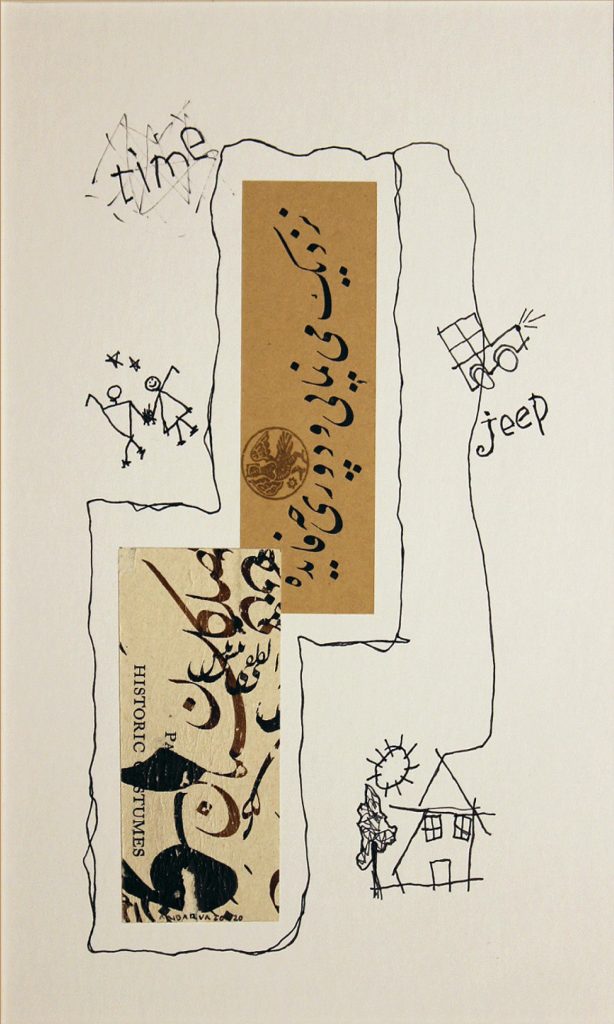
Ink on Ahar Paper
Nastaliq style
The text is a single sentence at the top. It means “You pretend to be close but are far away”. At the bottom there is a combination of words.
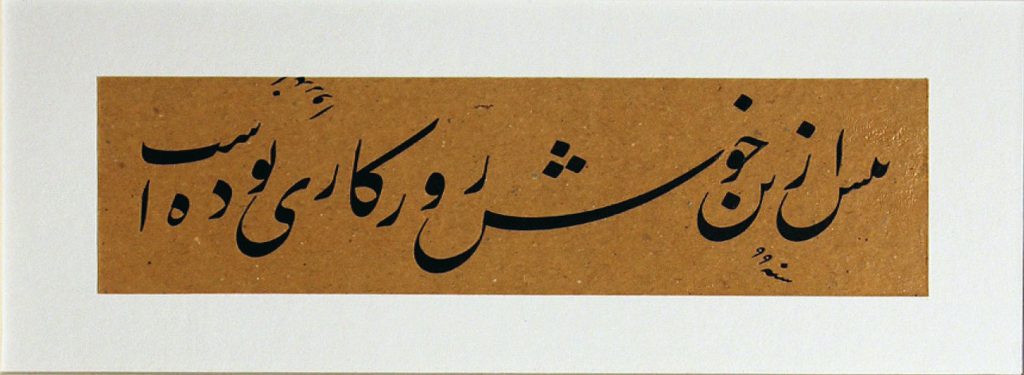
Ink on Ahar Paper
Nastaliq style
The text is part of an old anonymous poem. It means “There were good days before our time”.
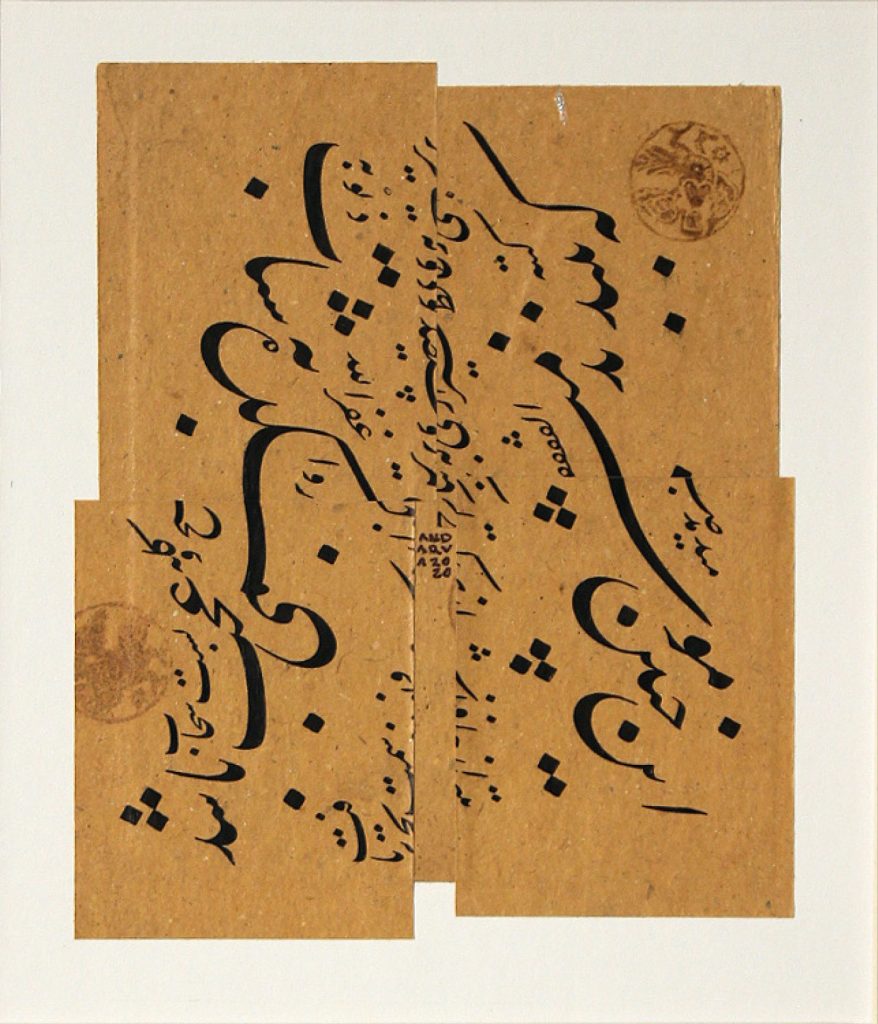
Ink on Ahar Paper
Nastaliq style
The text is part of a poem by Hafiz Shirazi (A famous Iranian poet- 8th century). It means, “At such a time, ‘It is wonderful’ that they close the tavern hastily”.
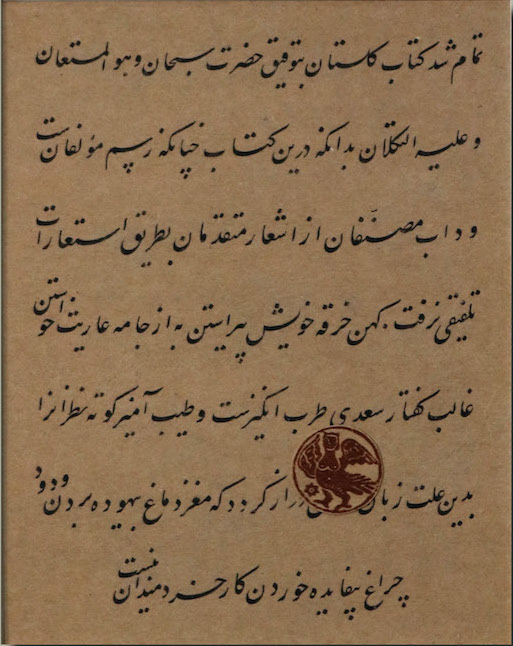
Ink on Paper
Nastaliq style
The text is part of a book Gulistan by Sa’di Shirazi (A famous Iranian poet).
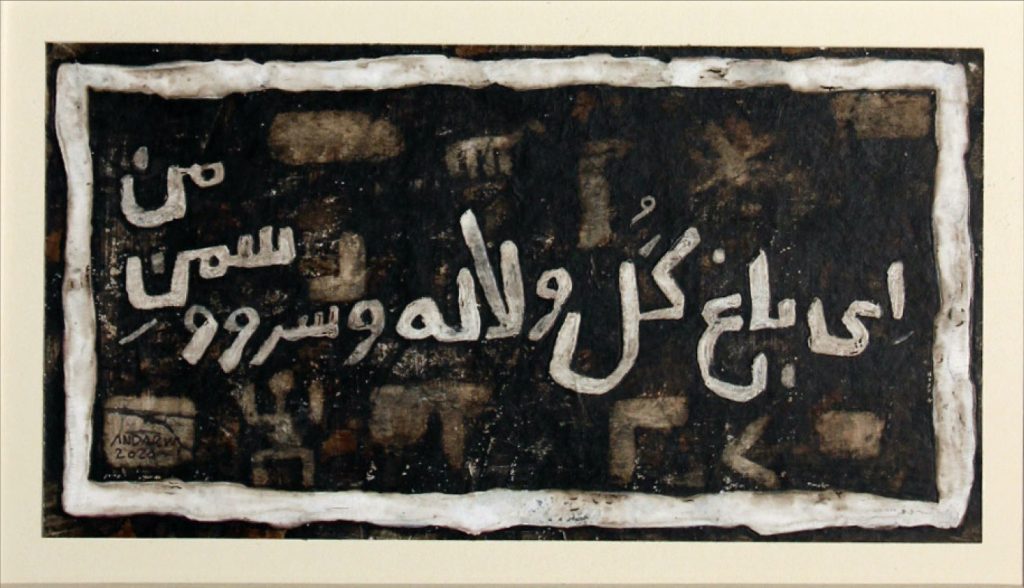
Ink on Ahar Paper
Nastaliq style
The text is part of a poem by Bahar (A famous Iranian poet), which I have written in childish font. It means, “You are my garden full of flowers”.
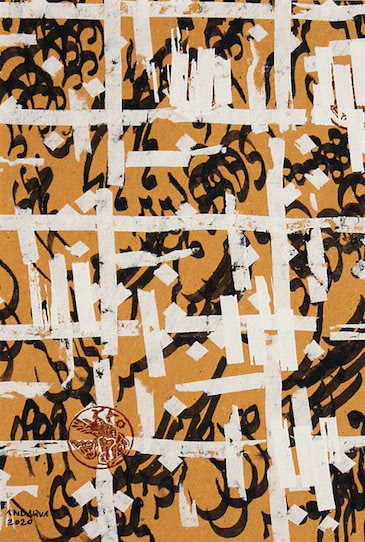
Ink on Ahar Paper
Nastaliq style
The text is a part of a poem by Hafiz Shirazi. It means “Your face is a collection of beauties”.
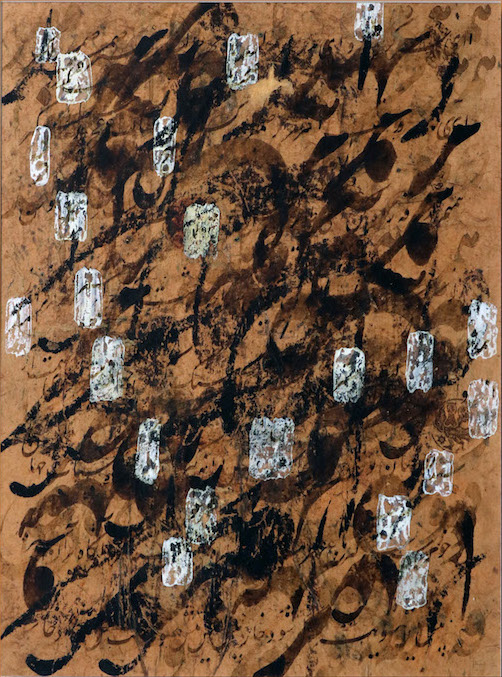
Ink on Ahar Paper
Nastaliq style
The text is part of a poem by Hafiz Shirazi. It means, “The sages are the center of the compass of existence but love knoweth that in this circle of love their revolving is confused”.
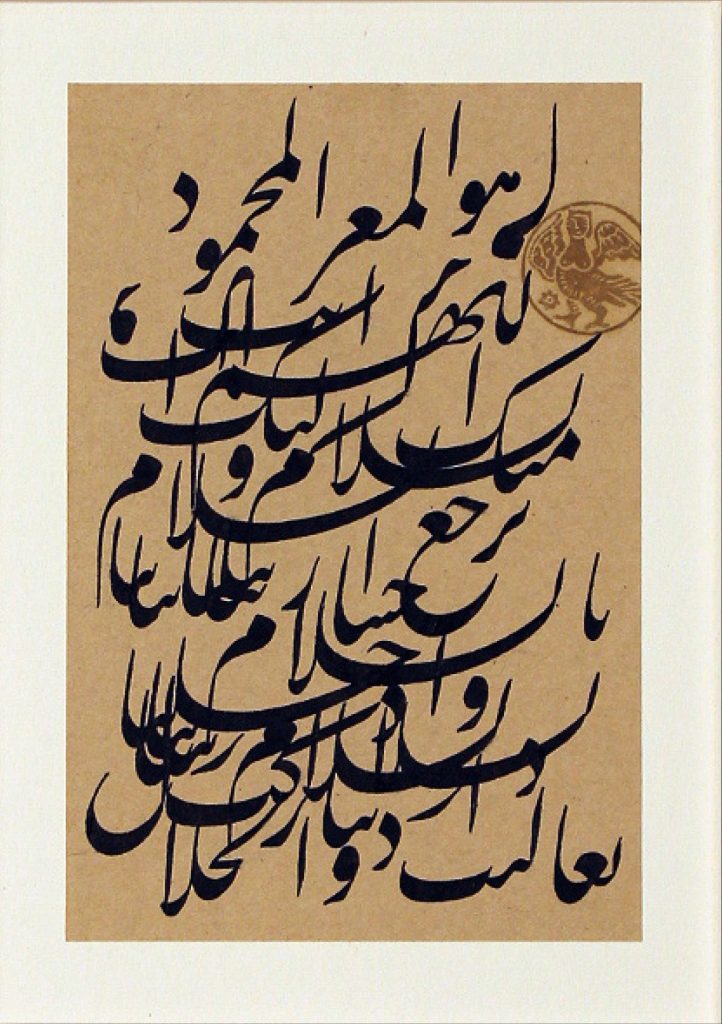
Ink on Ahar Paper
Nastaliq style
The text is an Arabic Prayer. It means “God, you are absolute health and absolute health is from you”.
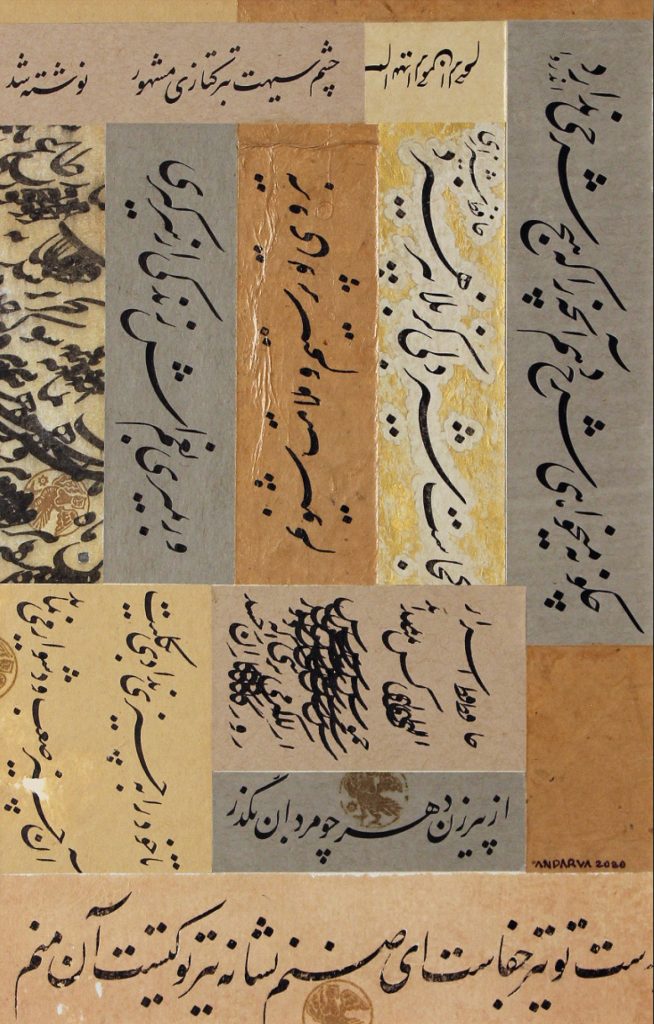
Ink on Ahar Paper
Nastaliq style.
A number of sentences that have no common meaning.
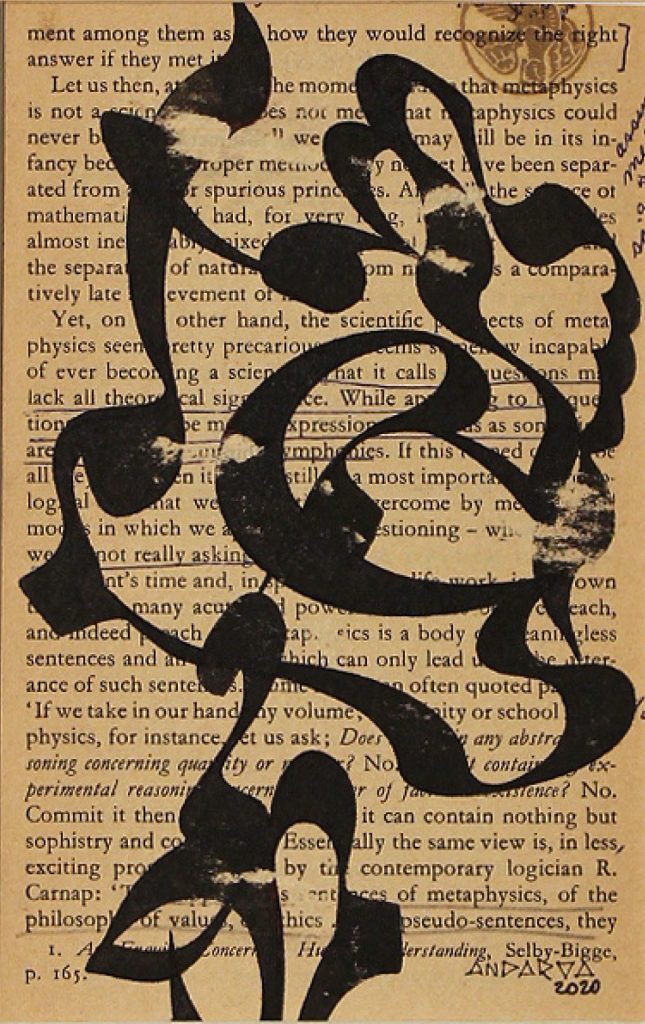
Ink on Ahar Paper
Nastaliq style
Some combined letters without having special meaning.
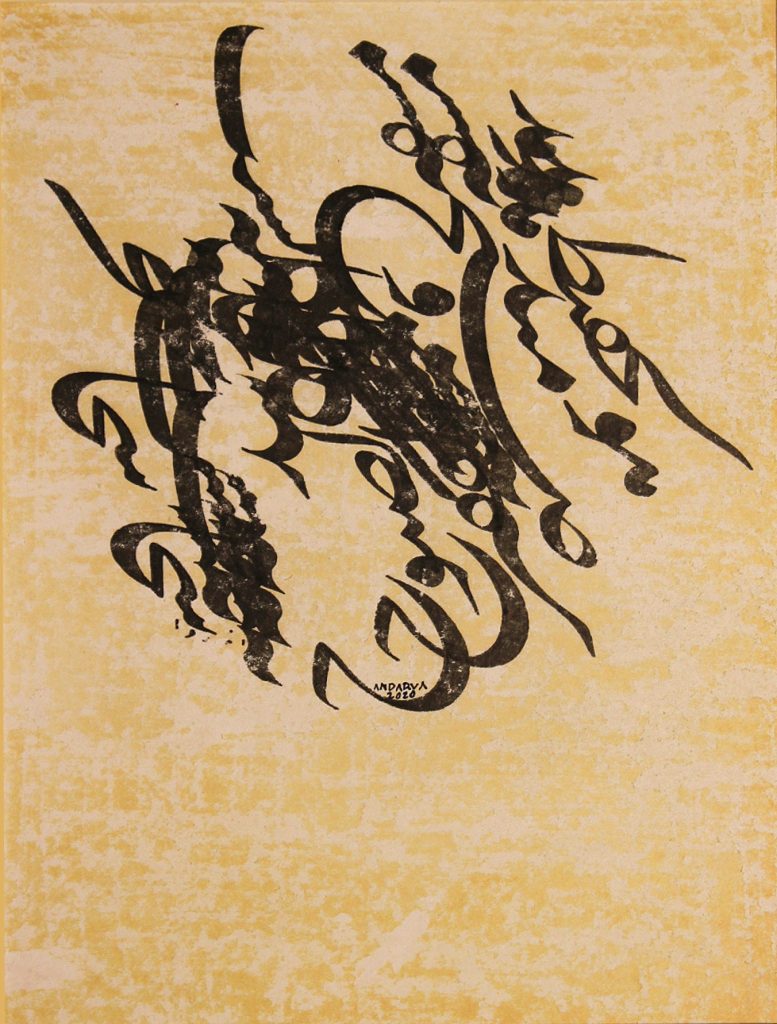
Ink on Paper
Nastaliq style
The text is a part of a poem by Hafiz Shirazi. It means, “The morning of ecstatic state blossometh and the cloud bindeth a veil obscuring the sun of truth”.
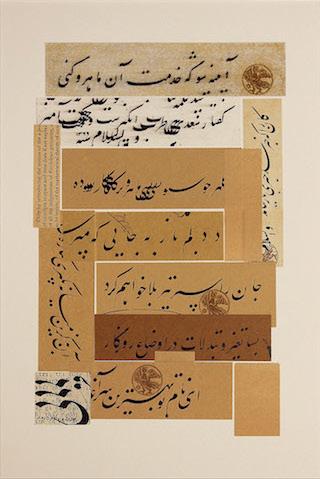
Ink on Paper
Nastaliq style
A number of sentences that have no common meaning.
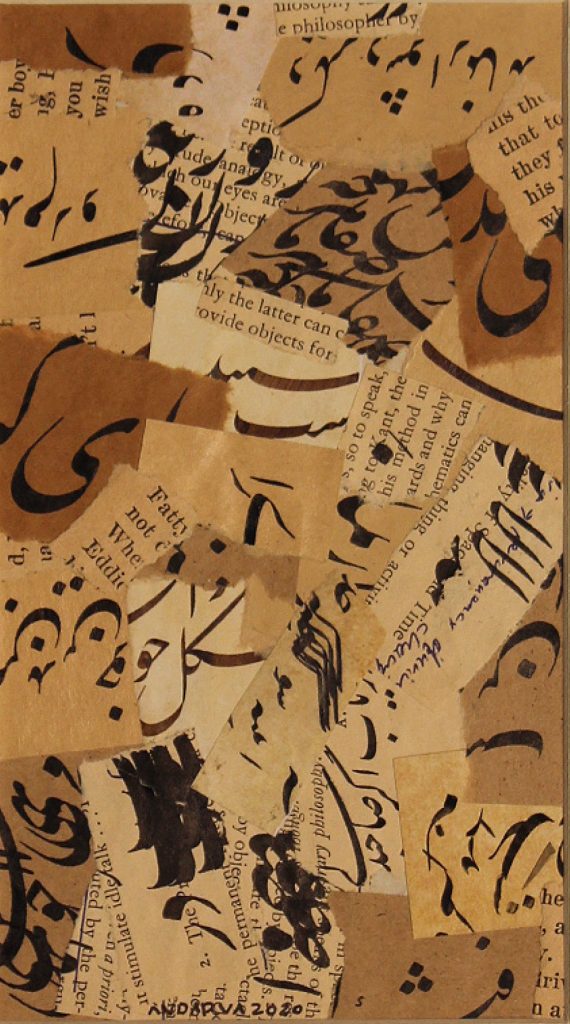
Ink on Paper
Nastaliq style
A number of sentences that have no common meaning.
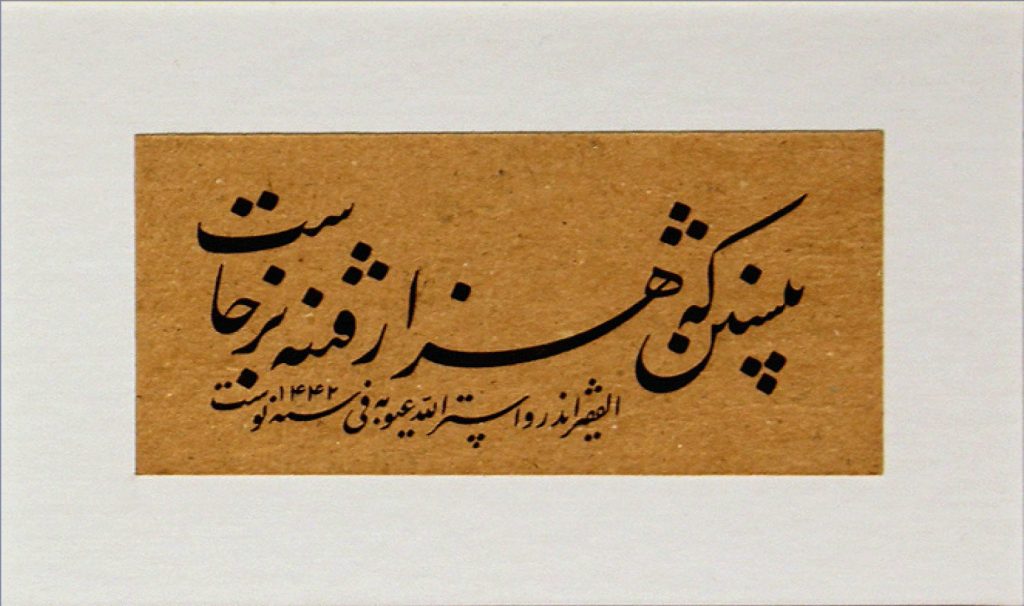
Ink on Ahar Paper
Nastaliq style
The text is part of a poem by Saa’di Shirazi (A famous Iranian poet.) It means, “Sit down; great chaos has been created”.
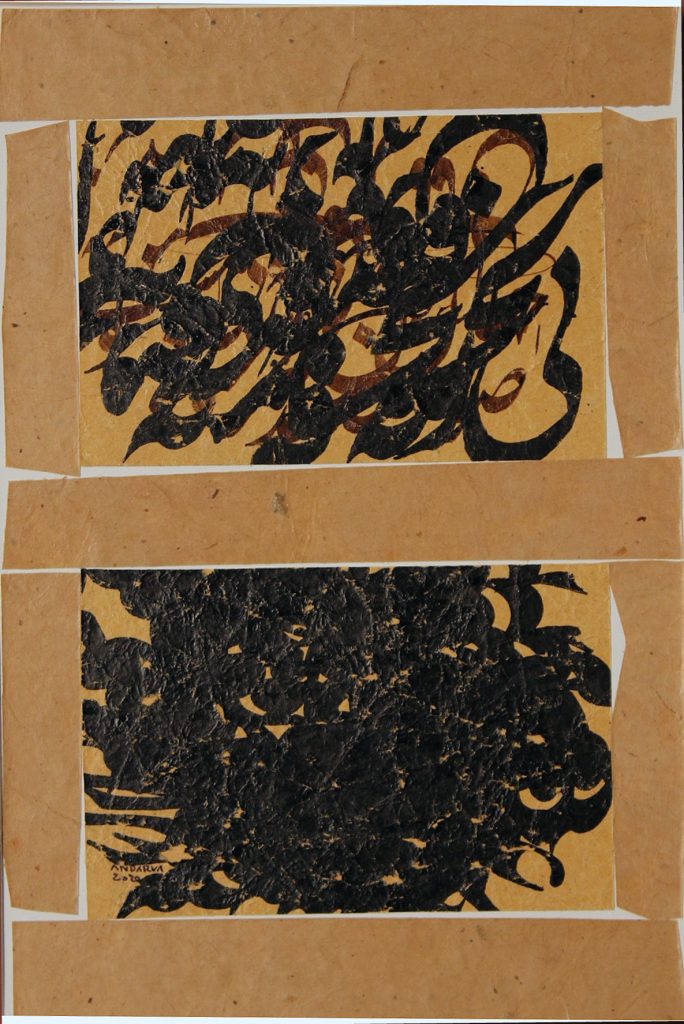
Ink on Ahar Paper
Nastaliq style
Miscellaneous words without sentences or special meaning.
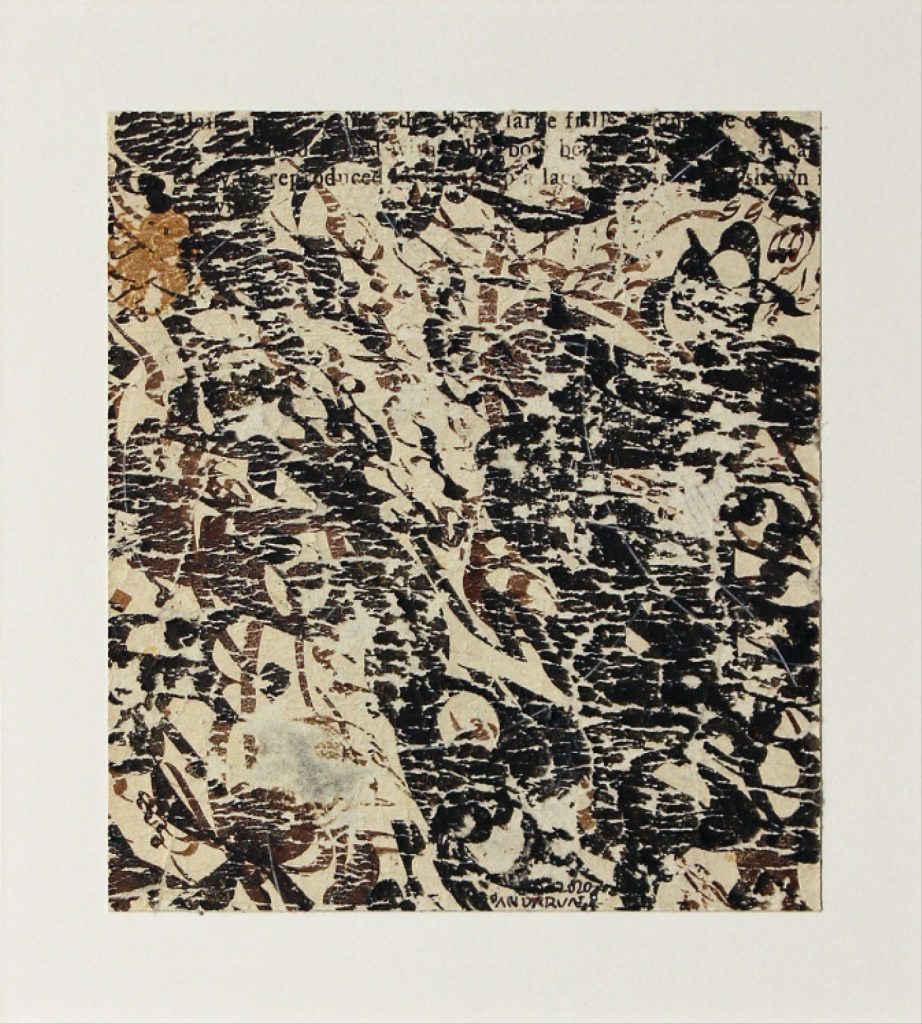
Ink on Ahar Paper
Nastaliq style
Miscellaneous words without sentences or special meaning.
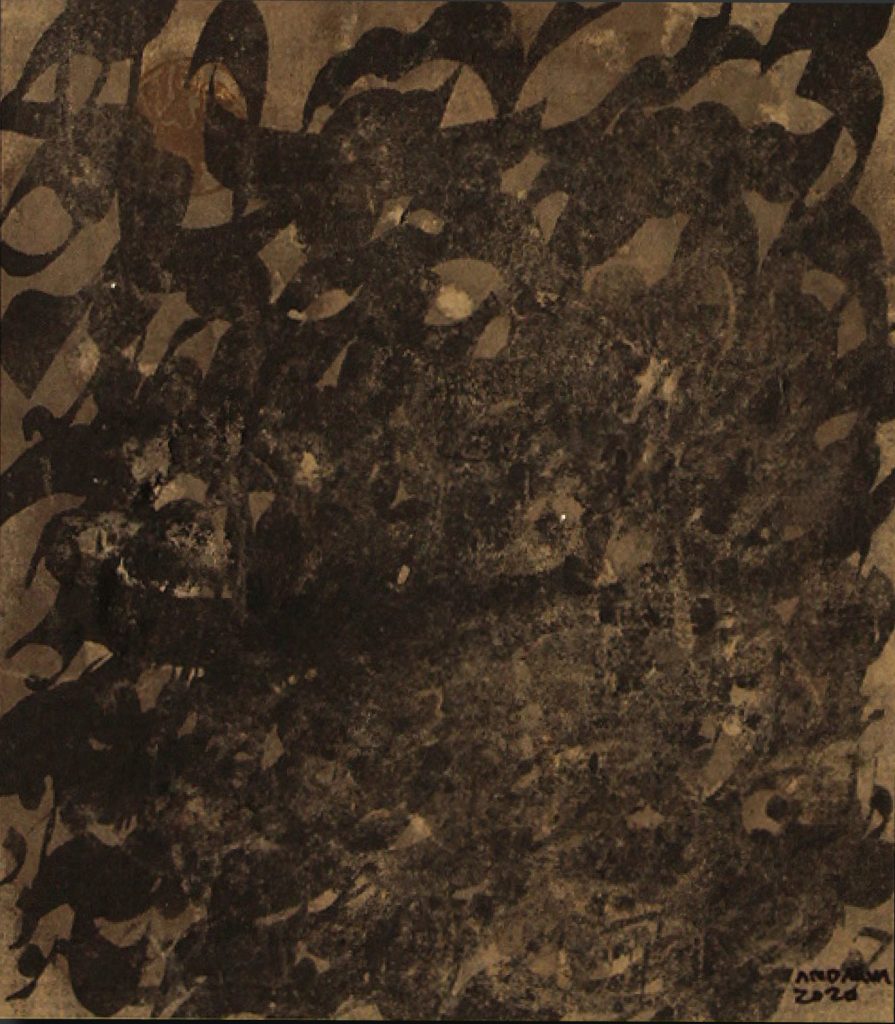
Ink on Paper
Nastaliq style
Miscellaneous words without sentences or special meaning.
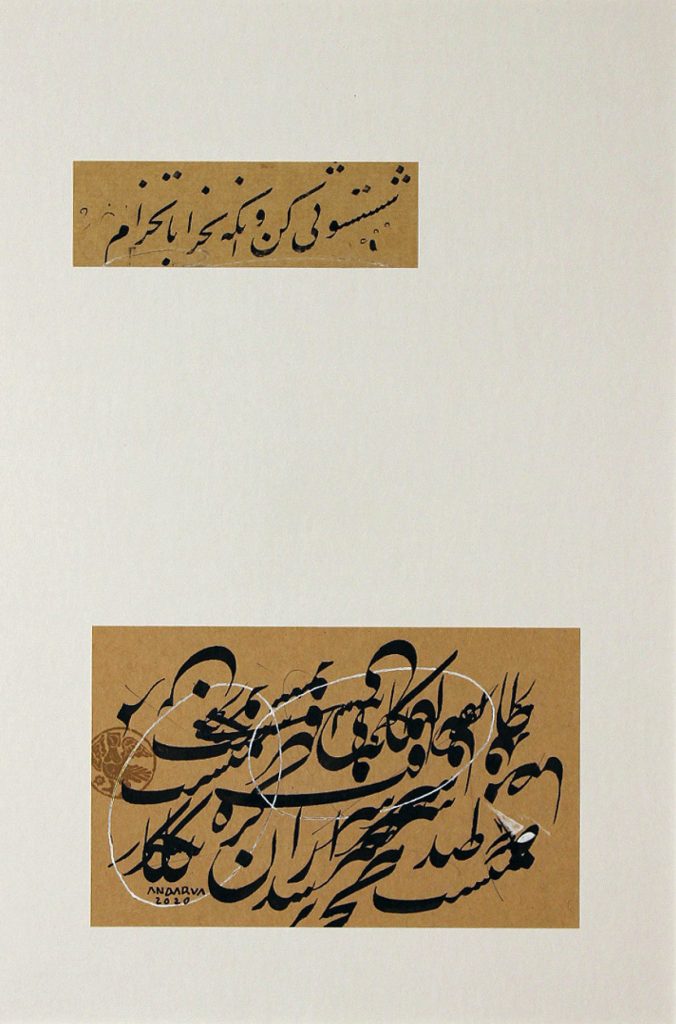
Ink on Ahar Paper
Nastaliq style
The text at the bottom is a part of a poem by Forooghi Bastaami (A famous Iranian poet). It means, “There are hundreds of thousands of knots in my work” and the text at the top is part of a poem bu Hafiz Shirazi. It means “Purify and purify and go proudly to the temple”.
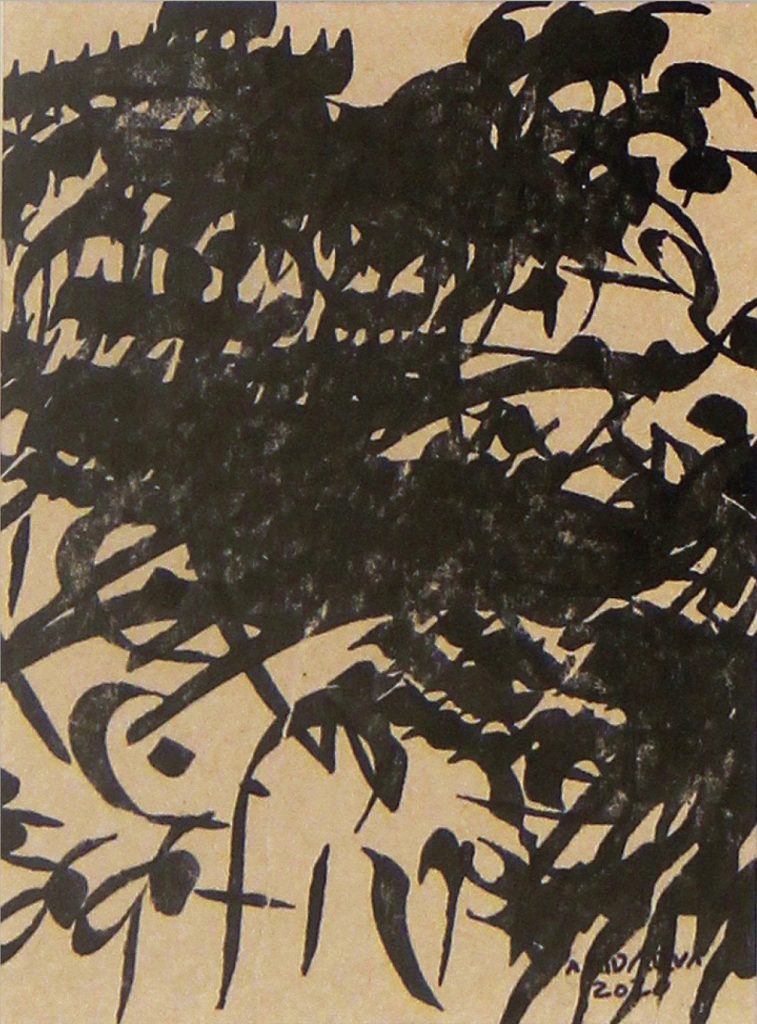
Ink on Ahar Paper
Nastaliq style
Miscellaneous words without sentences or special meaning.
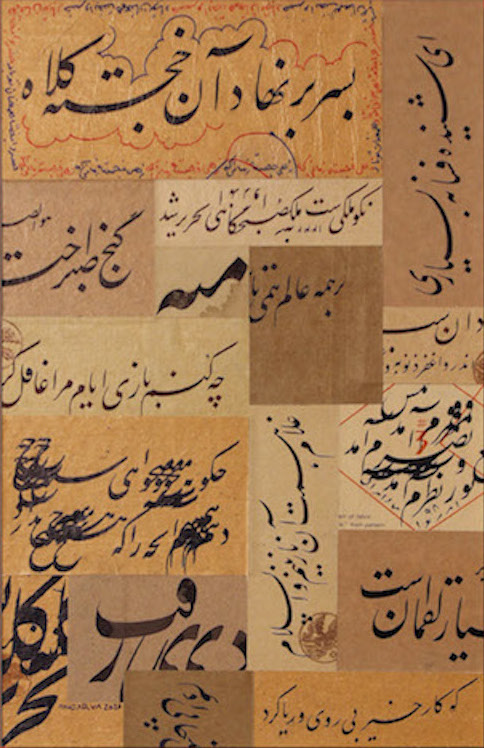
Ink on Ahar Paper
Nastaliq style
A number of sentences that have no common meaning.

Ink on Ahar Paper
Nastaliq style
A sentence that is repeated several times. It means “I wrote for my wife”.
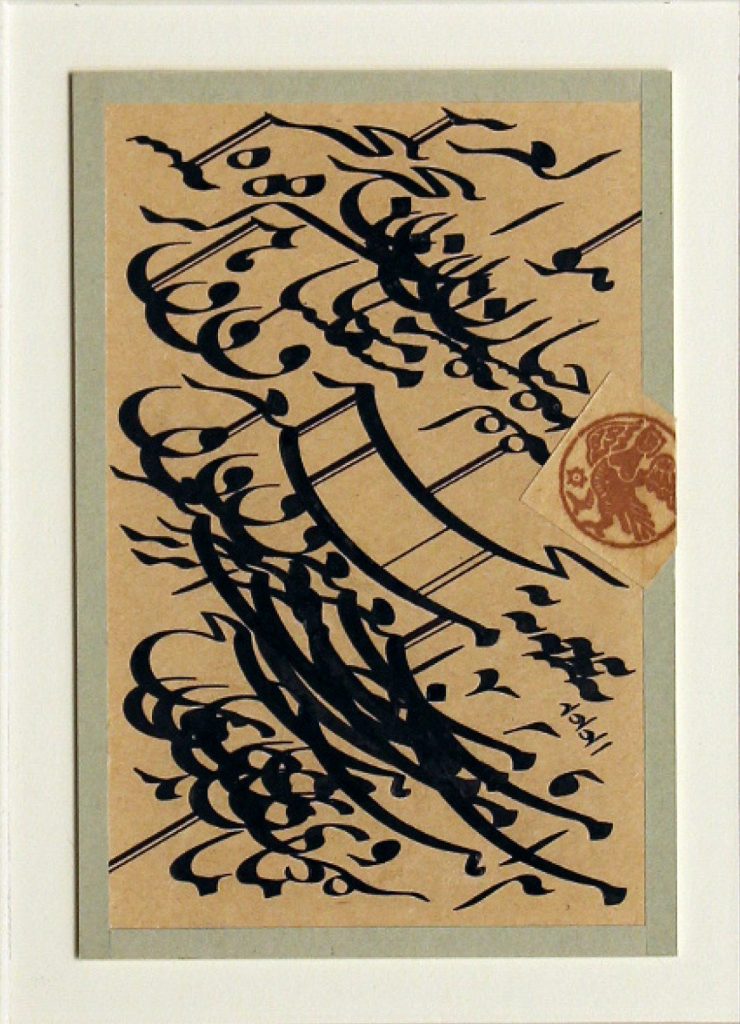
Ink on Ahar Paper
Nastaliq style
A anonymous sentence. It means, ” He was drowned in the sea of observation, so that he left no trace”.
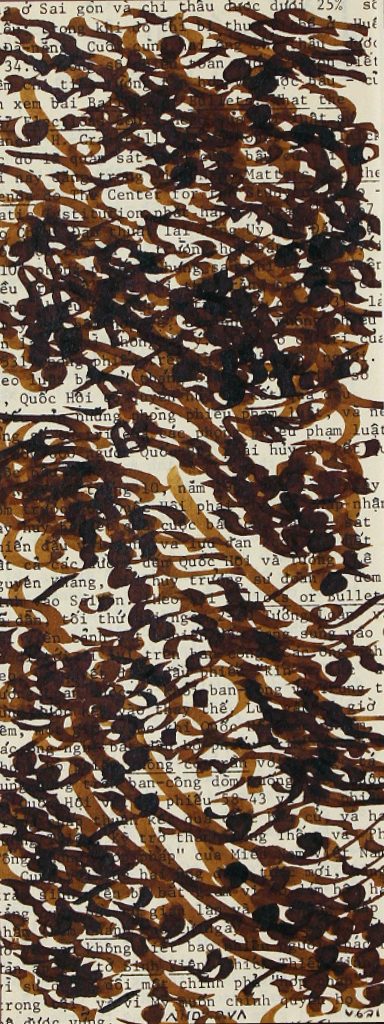
Ink on Paper
Nastaliq style
Miscellaneous words without sentences or special meaning.
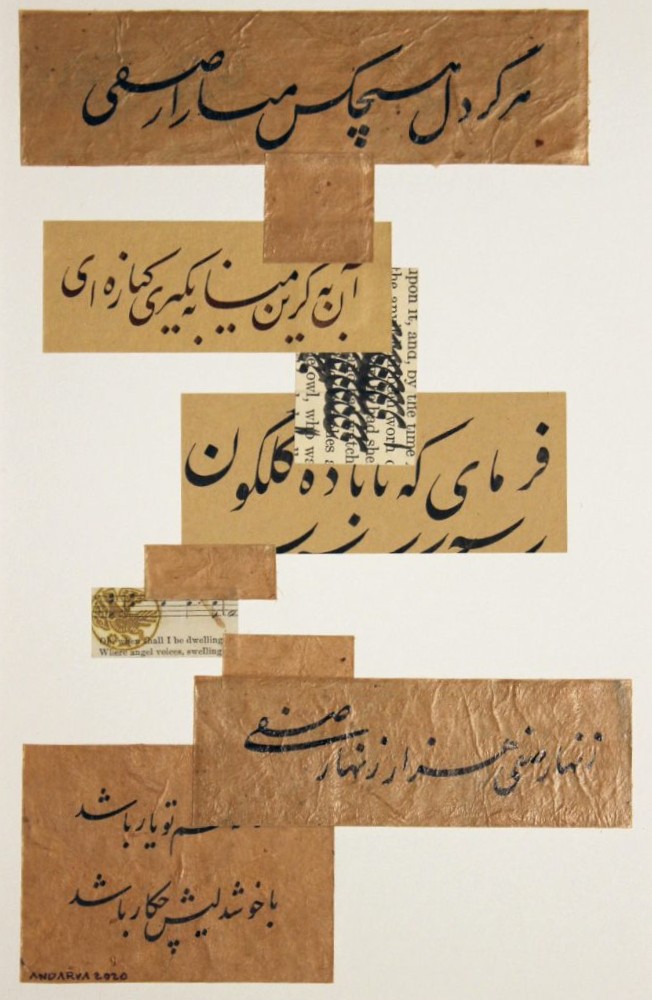
Ink on Ahar Paper
Nastaliq style
A number of sentences that have no common meaning.
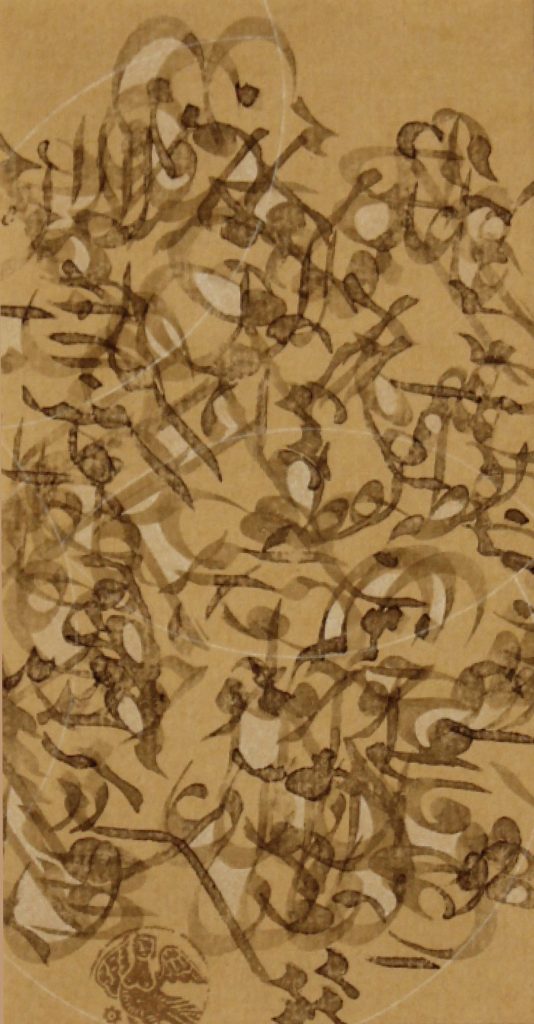
Ink on Paper
Nastaliq style
The text is part of a poem by Hafiz Shirazi. It means, ” The sages are the center of the compass of existence but love knoweth that in this circle of love their revolving is confused”.
